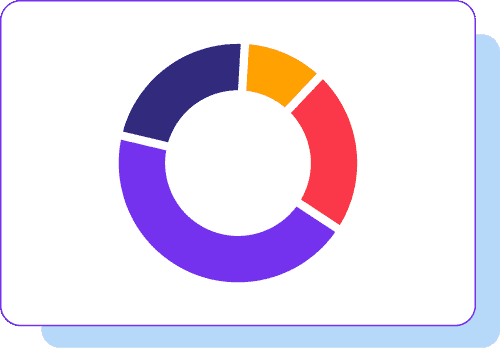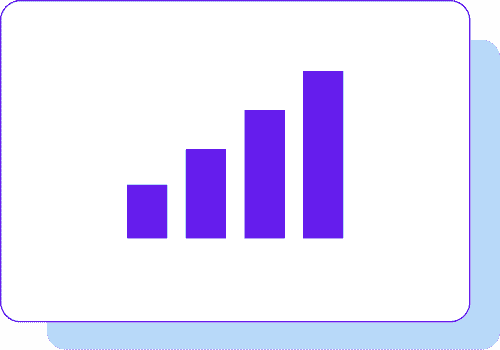Welcome to the Digital Mastery Series, where we embark on a journey to unlock the full potential of your online presence. In today’s interconnected world, mastering the digital realm is a crucial aspect of any successful business strategy. One key element of this mastery lies in selecting the right social media platforms to showcase your brand, connect with your audience, and drive meaningful results.
Social media has evolved into a dynamic ecosystem, offering a multitude of platforms each with its unique features, audience demographics, and engagement mechanisms. As we delve into this crucial topic, we’ll explore how to strategically navigate the ever-expanding landscape of social media to ensure that your business not only survives but thrives in the digital age.
In this installment of the Digital Mastery Series, we will guide you through the process of choosing the most fitting social media platforms for your business. So, whether you’re a budding entrepreneur, a seasoned business owner, or someone looking to amplify their digital presence, join us as we unravel the intricacies of selecting the perfect social media platforms tailored to your unique business goals and target audience. Let’s embark on this journey together and pave the way for your digital mastery.
What Social Media Plaform You Should Use?
Welcome to the heart of your journey toward social media success— I designed the form below to provide you with personalised recommendations tailored to your business. As you navigate through this article, take a moment to leverage this powerful tool for a more targeted and efficient decision-making process.
Smart Social Suggestions
Understanding Your Target Audience
In the quest for social media mastery, a critical initial step is gaining a comprehensive understanding of your target audience. This involves not only demographic information but a nuanced examination of their behaviors, interests, and the challenges they face. By delving into the intricacies of your audience, you can tailor your social media strategy to effectively engage and resonate with them.

Demographics
Understanding the demographic composition of your audience is foundational. Consider factors such as age, gender, location, and profession to form a well-rounded view of who your audience is. For instance, if your audience spans a diverse age range and professional backgrounds, a multi-faceted approach may be necessary to cater to their varied interests.
| Category | Data |
|---|---|
| Age Range | 18-34 |
| Gender | Varied or (Percentage Men to Women) |
| Location | Urban, Suburban, Rural |
| Profession | Diverse (Specify if applicable) |
Behaviors
Understanding how your audience behaves online is crucial. Daily social media usage, internet-savvy habits, and preferred interaction channels should be considered. If your audience tends to consume visual content and engages through short-form videos, platforms like Instagram or TikTok may be particularly effective.
| Category | Data |
|---|---|
| Online Habits | Daily social media usage, internet-savvy |
| Content Consumption | Visual content, short-form videos |
| Preferred Channels | Social media platforms, messaging apps |
Interests
Dive into the hobbies, preferences, and content types that resonate with your audience. If your audience is interested in fitness, technology, and travel, incorporating these themes into your content can enhance engagement. Understanding their preferences for visual storytelling or informative content further refines your approach.
| Category | Data |
|---|---|
| Hobbies | Fitness, Technology, Travel |
| Preferences | Visual storytelling, informative content |
| Engaging Content Type | Infographics, Lifestyle Vlogs |
Challenges
Identifying the challenges your audience faces is essential. Recognize pain points such as time constraints and information overload. Crafting content that provides concise, visually appealing solutions can effectively address these challenges.
| Category | Data |
|---|---|
| Pain Points | Time constraints, information overload |
| Content Solutions | Concise, visually appealing information |
Analysing Demographics and Preferences
| Demographic Analysis | Preferences and Behaviors |
|---|---|
| Demographic | Age Range |
| Example 1 | 25-34 |
| Example 2 | 18-24 |
| Preferences and Behaviors | Alignment with Social Platforms |
| Platform Preference | Content Type |
| Visual | |
| Professional | |
| Integrated Insights | Identifying Platforms Favored by Your Audience |
| Platform | Integrated Insights |
| Engage younger audience with visually appealing content | |
| Establish professional presence, share thought leadership |
As we move forward, these insights will be invaluable in aligning your business goals with the most suitable social media strategies. The next section will explore this alignment in depth (Section IV).
Aligning Business Goals with Social Media Strategies
Now that you’ve gained comprehensive insights into your target audience, the next critical step is aligning your business goals with social media strategies. A strategic alignment ensures that your social media efforts contribute directly to achieving overarching business objectives.

Defining Your Business Objectives
Clarify Your Mission
Revisit your business mission and objectives. Articulate clear and measurable goals that align with your broader business vision. Whether it’s increasing brand awareness, driving sales, or fostering community engagement, ensure your goals are specific and measurable.
| Business Objective | Example |
|---|---|
| Increase Awareness | Launch new product |
| Drive Traffic | Promote blog content |
| Boost Sales | Run limited-time offer |
Aligning Goals with Social Media Strategies
Platform Relevance
Refer back to the audience insights from Section III. Align your goals with platforms that resonate most with your target audience. Tailor your approach based on the platform’s strengths.
| Platform | Audience | Goals Alignment |
|---|---|---|
| Visual storytelling for brand awareness | Visual and shareable content for brand awareness | |
| Professional content for thought leadership | Thought leadership articles and professional content | |
| Quora | Thought leadership and community engagement | Provide insightful answers and engage in discussions |
| Community engagement and discussions | Participate in relevant subreddits and discussions | |
| TikTok | Creative and engaging short-form videos | Creative and entertaining short-form videos |
| Snapchat | Real-time engagement with younger audience | Behind-the-scenes and real-time content |
| Visual discovery and brand promotion | Visually appealing pins for brand promotion | |
| YouTube | Video content for brand storytelling | Video content for storytelling and tutorials |
| X (Twitter) | Real-time updates and engagement | Quick updates, trends, and engagement |
| Comprehensive brand presence and engagement | Varied content to cater to diverse audience |
| Business Objective | Aligned Social Media Strategy |
|---|---|
| Increase Awareness | Focus on visually engaging content, collaborations, and hashtags |
| Drive Traffic | Emphasize link-sharing, SEO optimization, and content variety |
| Boost Sales | Implement targeted advertising, promotions, and customer testimonials |
Content Strategy
Develop a content strategy that aligns with your goals. Tailor your content to suit the preferences of your audience and the nature of each platform.
| Platform | Content Strategy Alignment |
|---|---|
| Visual and shareable content for brand awareness | |
| Thought leadership articles and professional content | |
| Quora | In-depth answers and insights on relevant topics |
| Authentic and engaging discussions | |
| TikTok | Creative and entertaining short-form videos |
| Snapchat | Behind-the-scenes and real-time content |
| Create and share visually appealing pins | |
| YouTube | Engage with comments and create interactive content |
| X (Twitter) | Participate in trending topics and hashtag campaigns |
| Host live sessions, polls, and community events |
Determining Key Performance Indicators (KPIs)
Selecting Relevant Metrics: Identify KPIs that directly align with your business objectives. If your goal is to increase website traffic, track click-through rates from social media links.
| Selected KPIs |
|---|
| Brand Reach: Impressions and engagement on Instagram |
| Sales: Conversion rates and revenue from social media ads |
| Community Engagement: Likes, comments, and shares |
| Thought Leadership: Views and engagement on LinkedIn posts |
Regular Monitoring: Establish a system to monitor and analyze selected KPIs regularly. Leverage social media analytics tools to gain insights into the performance of your content and engagement strategies.
| Monitoring Schedule |
|---|
| Weekly review of engagement metrics |
| Monthly analysis of conversion rates and revenue |
Evaluating Advertising and Marketing Options on Each Platform
Adapt Strategies to Platform Features
Consider the advertising and marketing options offered by each platform. Choose platforms that allow you to implement strategies aligning with your business goals.
| Advertising and Marketing Evaluation |
|---|
| Instagram Ads for visual storytelling and brand awareness |
| LinkedIn Sponsored Content for thought leadership |
| TikTok Ads for reaching a younger and creative audience |
| Snapchat Ads for real-time engagement with a younger audience |
| Pinterest Ads for promoting visually appealing pins |
| YouTube Ads for video content and brand storytelling |
| X (Twitter) Ads for reaching a broad audience with trending topics |
| Facebook Ads for comprehensive brand presence and engagement |
Platform-Specific Analysis
Having established a foundation for aligning business goals with social media strategies and budget allocation, the next crucial step is a detailed analysis of platform-specific strengths and features. Each social media platform possesses unique characteristics that can be leveraged to meet specific objectives. Let’s delve into a comprehensive examination of some major platforms and their suitability for various business goals.

Instagram – Visual Storytelling
Instagram is a visual-centric platform, making it ideal for brand awareness through compelling visual storytelling. Whether through engaging images, carousel posts, or short videos, Instagram captivates users with aesthetically pleasing content. Utilise Instagram Stories for real-time updates, and leverage the Explore page to reach a broader audience.
| Platform Strengths | Strategies for Success |
|---|---|
| Visual storytelling | Showcase your brand story through high-quality visuals |
| Engagement through Stories | Utilise Instagram Stories for behind-the-scenes content |
| Explore page reach | Optimize content for discovery on the Explore page |
LinkedIn – Professional Networking
LinkedIn stands out as the go-to platform for professional networking, making it ideal for thought leadership and business-to-business (B2B) interactions. Leverage long-form articles to showcase industry expertise, participate in relevant groups, and explore sponsored content for targeted visibility.
| Platform Strengths | Strategies for Success |
|---|---|
| Professional networking | Establish a thought leadership presence through articles |
| B2B engagement | Connect with industry professionals and businesses |
| Sponsored content visibility | Increase brand visibility through targeted campaigns |
TikTok – Creative Expression
TikTok’s popularity among younger audiences makes it an exciting platform for creative expression and brand engagement. Capitalise on short-form videos, collaborate with influencers, and participate in trending challenges to enhance your brand’s visibility.
| Platform Strengths | Strategies for Success |
|---|---|
| Creative expression | Develop entertaining and creative short-form videos |
| Youthful audience engagement | Collaborate with TikTok influencers for wider reach |
| Trend participation | Engage with trending challenges to boost visibility |
YouTube – Video Content Hub
As a video-centric platform, YouTube is a powerful channel for in-depth content, tutorials, and brand storytelling. Create engaging video content, optimise titles and descriptions for search, and consider collaborations with influencers or content creators.
| Platform Strengths | Strategies for Success |
|---|---|
| Video content hub | Produce high-quality and informative video content |
| Search engine visibility | Optimise titles and descriptions for search ranking |
| Collaborations and partnerships | Partner with influencers for expanded audience reach |
Twitter – Real-Time Updates
Twitter excels in real-time updates, trends, and concise engagement. Utilize hashtags for broader reach, participate in trending conversations, and maintain a consistent posting schedule for enhanced visibility.
| Platform Strengths | Strategies for Success |
|---|---|
| Real-time updates | Share timely and relevant updates for audience engagement |
| Hashtag utilization | Increase visibility by using popular and relevant hashtags |
| Consistent posting schedule | Maintain regular posting to stay visible in the feed |
Facebook – Comprehensive Presence
Facebook remains a comprehensive platform for diverse content and audience engagement. Establish a business page, use a mix of content types, and consider paid advertising to expand your reach.
| Platform Strengths | Strategies for Success |
|---|---|
| Diverse content types | Share a mix of text, images, videos, and links for variety |
| Audience engagement | Encourage comments, shares, and interactions on posts |
| Paid advertising | Explore Facebook Ads for targeted and broader reach |
Quora – Thought Leadership and Community Engagement
Quora serves as a platform for thought leadership and community engagement. Engage in discussions, provide insightful answers, and establish your brand as an authority in relevant topics.
| Platform Strengths | Strategies for Success |
|---|---|
| Thought leadership | Participate in discussions and provide insightful answers |
| Community engagement | Engage with the Quora community through valuable contributions |
Reddit – Community Engagement and Discussions
Reddit is a platform known for community engagement and discussions. Participate in relevant subreddits, share authentic content, and contribute to discussions to build a community around your brand.
| Platform Strengths | Strategies for Success |
|---|---|
| Community engagement | Participate in relevant subreddits and provide authentic content |
| Discussions and interactions | Contribute to discussions and engage with the Reddit community |
Snapchat – Real-Time Engagement
Snapchat offers real-time engagement, making it suitable for reaching a younger audience. Share behind-the-scenes content, run interactive campaigns, and leverage features like Stories for dynamic engagement.
| Platform Strengths | Strategies for Success |
|---|---|
| Real-time engagement | Share behind-the-scenes content and run real-time campaigns |
| Audience interaction | Leverage features like Stories for dynamic engagement |
Pinterest – Visual Discovery and Brand Promotion
Pinterest is a visual discovery platform, making it ideal for brand promotion. Create visually appealing pins, curate boards that align with your brand, and engage with the Pinterest community.
| Platform Strengths | Strategies for Success |
|---|---|
| Visual discovery | Create visually appealing pins and boards that align with your brand |
| Community engagement | Engage with the Pinterest community through comments and collaboration |
Table: Platform Strengths and Strategies for Success
| Platform | Strengths | Strategies for Success | Target Audience |
|---|---|---|---|
| Visual storytelling, engagement | Showcase brand story through visuals, use Stories and Explore | Younger demographics, visual content enthusiasts | |
| Professional networking, B2B | Establish thought leadership, engage in B2B interactions | B2B professionals, job seekers, industry experts | |
| TikTok | Creative expression, youth engagement | Create entertaining short-form videos, engage in challenges | Diverse, with a significant presence of younger users |
| YouTube | Video content hub, search visibility | Produce informative video content, optimize for search | Varied demographics, especially video content consumers |
| X (Twitter) | Real-time updates, hashtag utilization | Share timely updates, engage with hashtags and trends | Diverse audience, news seekers, professionals |
| Comprehensive presence, diverse content | Share varied content, encourage engagement, explore Ads | Wide-ranging demographics, ideal for varied target audiences | |
| Quora | Thought leadership, community engagement | Participate in discussions and provide insightful answers | Varied audience seeking in-depth information and expert insights |
| Community engagement, discussions | Participate in relevant subreddits and provide authentic content | Niche communities with specific interests, broad range of demographics | |
| Snapchat | Real-time engagement | Share behind-the-scenes content, run real-time campaigns | Younger demographic, popular among teenagers and young adults |
| Visual discovery, brand promotion | Create visually appealing pins, engage with the community | Predominantly female users interested in visual content |
By understanding the unique strengths of each platform and tailoring strategies accordingly, you can optimize your social media presence for diverse business goals. In the subsequent section, we’ll explore resource allocation strategies to ensure effective implementation across selected platforms (Section VI).
Resources and Budgeting

Assessing Available Resources
Human Resources: Evaluate the team’s expertise and bandwidth for managing social media activities. Consider the need for additional skills or hiring specialists for content creation, analytics, and community management.
Content Creation: Assess the capacity for producing high-quality content. Determine if in-house resources are sufficient or if collaborations with external creators or agencies are necessary.
Budget Allocation: Define the financial resources available for social media marketing. Allocate budget segments for content creation, advertising, tools, and potential collaborations.
| Resource | Considerations |
|---|---|
| Human Resources | Team expertise, Additional skills needed |
| Content Creation | In-house capabilities, Collaboration needs |
| Budget Allocation | Segmentation for advertising, content creation, tools |
Budget Considerations for Social Media Marketing
- Paid Advertising: Allocate a portion of the budget for paid advertising on platforms like Facebook, Instagram, and LinkedIn. Consider the objectives, target audience, and ad formats.
- Content Creation and Tools: Dedicate resources for creating engaging content, including visuals, videos, and other media. Additionally, factor in the costs of social media management tools and analytics platforms.
- Collaborations and Partnerships: Explore opportunities for collaborations with influencers, other businesses, or content creators. Allocate a budget for potential partnerships that align with the brand.
ROI Analysis and Forecasting
- Setting Metrics for ROI: Define key performance indicators (KPIs) aligned with business objectives. Metrics may include conversion rates, engagement rates, and revenue generated.
- Monitoring and Adjusting Strategies: Implement analytics tools to track the performance of social media efforts. Regularly analyze data, adjust strategies based on insights, and ensure alignment with business goals.
- Forecasting Future Investments: Use historical data to forecast future investments. Consider trends, seasonal variations, and potential changes in the market to make informed decisions about budget allocation.
| ROI Considerations | Strategic Elements |
|---|---|
| Setting Metrics | Conversion rates, Engagement rates, Revenue |
| Monitoring Strategies | Analytics tools, Data analysis |
| Forecasting Investments | Historical data, Market trends, Seasonal variations |
Conclusion
The dynamic nature of social media requires continuous evaluation and adaptation. By staying informed, maintaining brand consistency, and learning from experiences, businesses can thrive in the ever-evolving digital landscape.
In the realm of social media marketing, adaptability emerges as a key asset. As platforms evolve and audience behaviors shift, businesses that embrace change and consistently refine their strategies are poised for long-term success.















